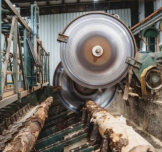What China Must Do to Innovate
8 years 10 months ago

Photo Credits: absolutechinatours
This article was first published in Innovation Excellence
Innovation is an essential ingredient to the growth and success of China’s economy. The use of methods such as Systematic Inventive Thinking will accelerate that growth. But where should China focus its innovation efforts?
Professors George Yip and Bruce McKern make the case that China should focus on the following:
- Cost innovation: Cost innovation occurs when changes in the product design, production or delivery process, technology or materials result in reduction in production or delivery costs. Using Systematic Inventive Thinking (SIT), the Task Unification Technique tends to produce ideas that are resourceful and cost effective.
- Process innovation: Process innovation occurs when a company creates a new process for producing or delivering an existing product or service. In China, much process innovation seeks to reduce the cost of production. For process innovation, the Division Technique helps break structural fixedness and create new, transformational processes.
- Application innovation: Application innovation occurs when existing products (or services) or technologies are combined in a new way to produce a new product. The humble but ubiquitous sandwich, and also the credit card, are classic examples. The Task Unification Technique forces the innovator to consider ways that existing resources can take on additional jobs, leading to clever new applications.
- Supply chain innovation: While China has become critical in the global supply chains of foreign companies, supply chains inside China still have much room for improvement. Infrastructure is needed to catch up with the country’s very rapid growth. Here, the Subtraction Technique forces the mind to remove essential elements of a supply chain to help see new opportunities and unique replacements for those elements.
- Product innovation: China has produced relatively few product innovations that are truly new to the world. But based on extensive experience with incremental innovations, Chinese companies are moving from incremental toward radical innovations. The Attribute Dependency Technique is great for taking exisitng incremental innovations and converting them to “smart” products.
- Technological innovation: China has yet to produce high-impact technology innovations with global significance. But we have seen examples of minor but world class technology being implemented to create innovations. Here again, the Task Unification Technique is especially effective for taking raw technologies and seeking new and novel uses in a wide variety of domains.
- Business model innovation: In China, most business model innovation has started by taking a Western model, adapting it to China, then further innovating the adaptation. Although Alibaba.com, for example, copied the eBay platform with its competing service Taobao, it quickly overtook eBay, based on its earlier B2B platform experience and innovations to suit the Chinese customer. To innovate a business model, use the Multiplication Technique. It challenges the innovator to consider key parts of the business model in a whole new light.
- Non-customer innovation: Non-customer innovation occurs when a business is able to serve a customer segment not previously served in this category elsewhere in the world or in a particular country. The so-called “adjacent market” appears attractive as a new source of growth, but these can be distracting. Consider instead applying most or all of the five techniques of SIT to an adjacent space before diving in.
As the professors noted, Chinese companies are adept at exploiting all of these forms of innovation due to their relentless focus on customers, their search for unmet needs, and remarkable speed. Adding in the use of systematic methods of innovation would take China even further.





































































EgyptInnovate site is not responsible for the content of the comments